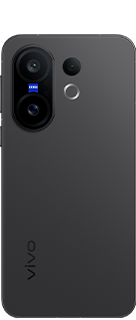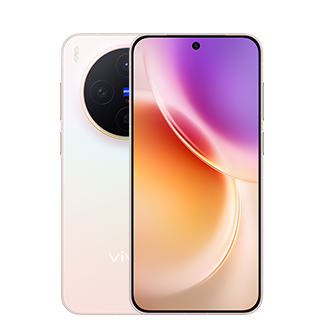How advances in low-light photography enable consumers to capture starry skies, using their smartphones
5. June, 2023
A look at the camera features of the vivo X90 Pro – a stellar flagship for immaculate low-light and night-time photography
In recent years, smartphone photography has undergone a remarkable evolution, particularly in the realm of low-light photography. Thanks to advancements such as larger image sensors, high-quality optics, and advanced AI-driven image processing algorithms, capturing stunning images in challenging lighting conditions has become more accessible than ever before.
Regardless of this, of course, real professionals have a few tricks that can turn a good photo to the perfect low light shot. In the following article, four ZEISS expert photographers - Timm Allrich, Jakub Polomski, Michael Portillo, and Gabriel Santos – reveal their secret settings and life hacks for the vivo X90 Pro to take the perfect shot in low light.

Gabriel Santos captures details of the Isla de Tapia lighthouse in Spain
Why is – or rather was – night photography using smartphones challenging?
According to Michael Portillo, "night photography has traditionally posed challenges for smartphone cameras, particularly in dealing with dynamic range issues. The high contrast between shadows and highlights often resulted in underexposed images lacking in detail, structure, and contrast. Additionally, managing high ISO settings for optimal image quality in low-light conditions proved challenging." Gabriel Santos stressed the importance of sensor size and lens luminosity in capturing maximum light for successful night photography, highlighting how "the larger the sensor and the more light the lens can gather, the better the results."
Timm Allrich added, praising the vivo X90 Pro for its integrated image stabilizer and a large, highly photosensitive sensor that excels in noise reduction, outperforming many smaller camera systems, whereas Jakub Polomski outlined various challenges faced in low-light smartphone photography, including small sensors limiting light capture, fixed apertures, aggressive noise reduction algorithms impacting detail, potential blurriness due to slower shutter speeds, degradation from digital zoom, and limited manual control over settings like ISO, shutter speed, and aperture.

Jakub Polomski brings mesmerising winterscapes from Cieszyn in Poland
The most visible aspect between successful and less successful implementation of night and low-light photography, looking through the eyes of expert photographers
According to Jakub, the most visible aspect differentiating good and not-so-good night photography is the level of noise or grain in the image. A successful night photograph should exhibit minimal noise, maintaining a clean and sharp appearance. Furthermore, good exposure and contrast, along with a balanced play of light and shadow, are essential, complemented by pleasing colours and a well-composed image.
Timm emphasized the importance of achieving a balanced image by managing the contrast and brightness differences, especially during different phases of the night. „The ability to compose accurately in low-light conditions can be challenging, making additional tools like flashlights beneficial." And Gabriel shared his opinion, highlighting the significance of playing with surrounding light to emphasize the desired subjects, using longer exposure times while keeping ISO as low as possible to minimize noise.
Michael suggested that „...a good night photograph should showcase details and contrasts in different light sources, maintaining realism while minimizing shadows. Effective management of HDR, colours, sharpness, and digital noise are crucial aspects to consider."

Michael Portillo conveys light details front-and-center, during the blue hour in Porto, Portugal
Expert tips on improving low-light photography results, even when using a smartphone
When it comes to optimal night and low-light photography, Gabriel emphasized the importance of practice and understanding how light behaves in low-light conditions. He advises using a tripod to ensure the highest possible image quality. Timm shares his thoughts, suggesting spending time observing how light, or the lack thereof, impacts image creation. „By capturing the same scene repeatedly during a sunset, one can learn to adjust settings like exposure time, aperture, and ISO sensitivity as the lighting changes. This hands-on experience helps photographers make the most of low-light situations," highlighted Timm Allrich.
Jakub recommends using a tripod or stable surface to minimize camera shake and experimenting with manual controls to achieve a better-balanced image with less noise. He also suggests creatively utilizing available light sources, such as streetlights or reflections, to add interest and dimension. Michael adds that, combining the tripod for sharp images, photographers should leverage night mode or pro mode to control settings like shutter speed and movement, and capture images during the blue hour for beautiful skies and intensified colours, possibly enhanced further with vivo filters.

Timm Allrich showcases even the most minute details of the Schwerin Castle in Schwerin, Germany
How has vivo perfected its low-light and night-time photography
Low light and night-time photos have always been topics of extensive interest and research for vivo experts, and the partnership with ZEISS only made these better. The X51, which was vivo's first European flagship device, introduced the Super Night Mode and a built-in gimbal, offering long exposure times and motion-deblur algorithms. Later on, X60 Pro, the first vivo smartphone co-engineered with ZEISS experts, improved the capabilities of the gimbal, and introduced the Extreme Night Vision 2.0. The previous flagship, X80 Pro, premiered the V1+ chip and the ZEISS T* Coating, further advancing low-light and night-time photography. And now, the vivo X90 Pro builds upon the achievements of its predecessors and brings the most refined low light photography experience,
The vivo X90 Pro can deliver impressive results in almost any conditions. Daytime photography has not been such a challenge for many years now, but with recent developments in terms of both hardware and software, low-light and night-time photography became a breeze, too. What was once reserved for professional photographers who owned and carried around quite costly and bulky equipment is now available to any mobile photography enthusiast, right in their pocket. With such a wide range of photo opportunities, every special moment can now become a cherished memory in the form of a spectacular photography, and the X90 Pro does it properly.
























